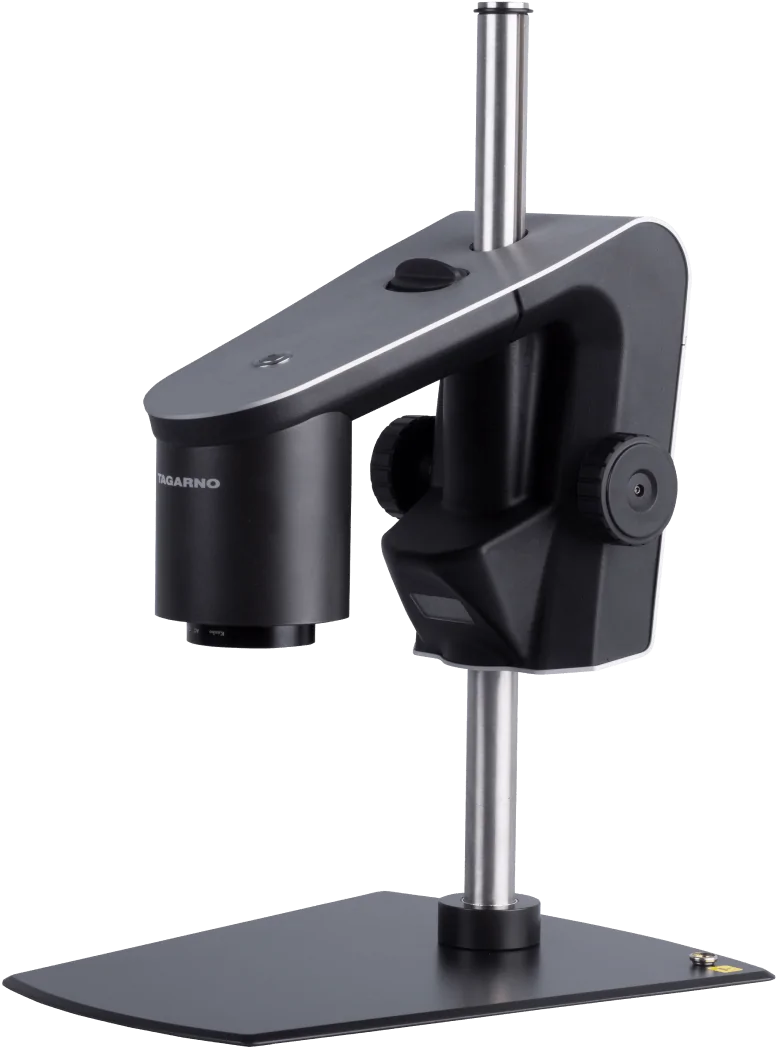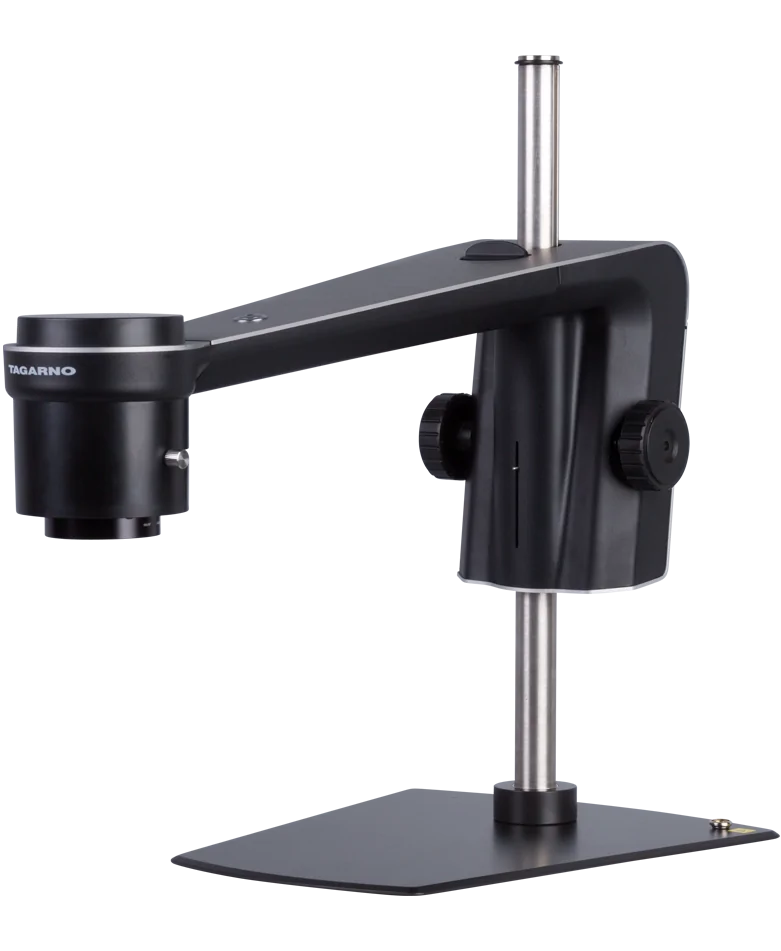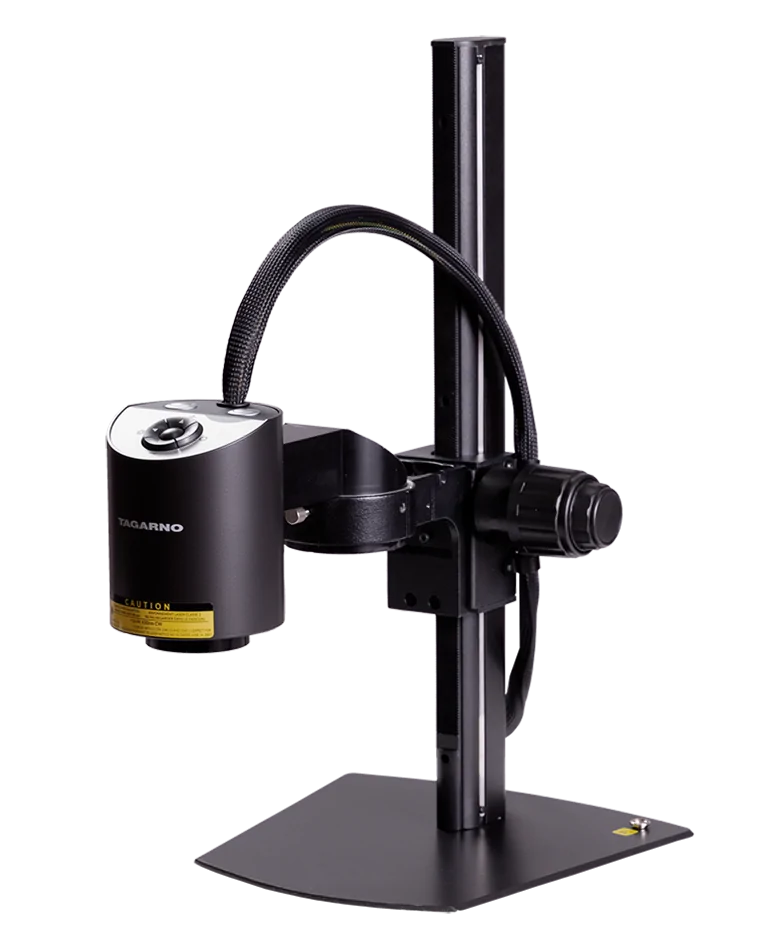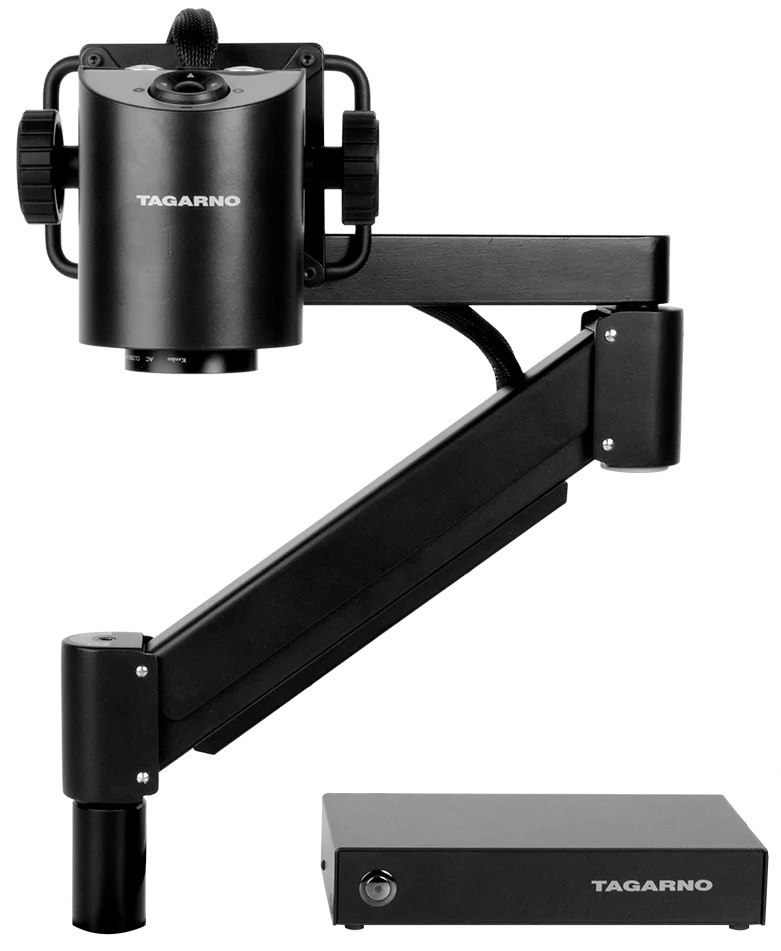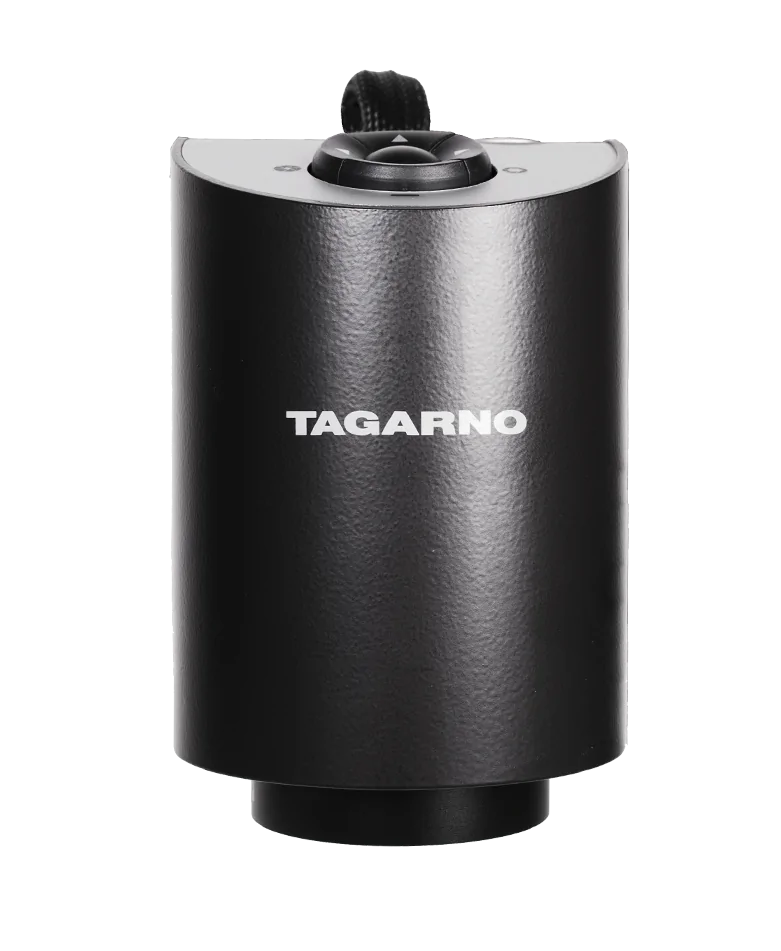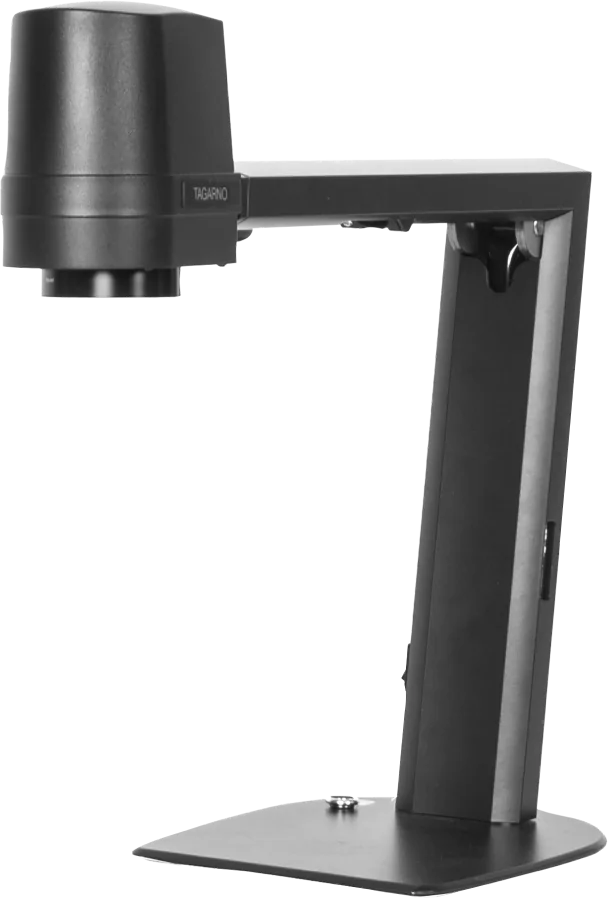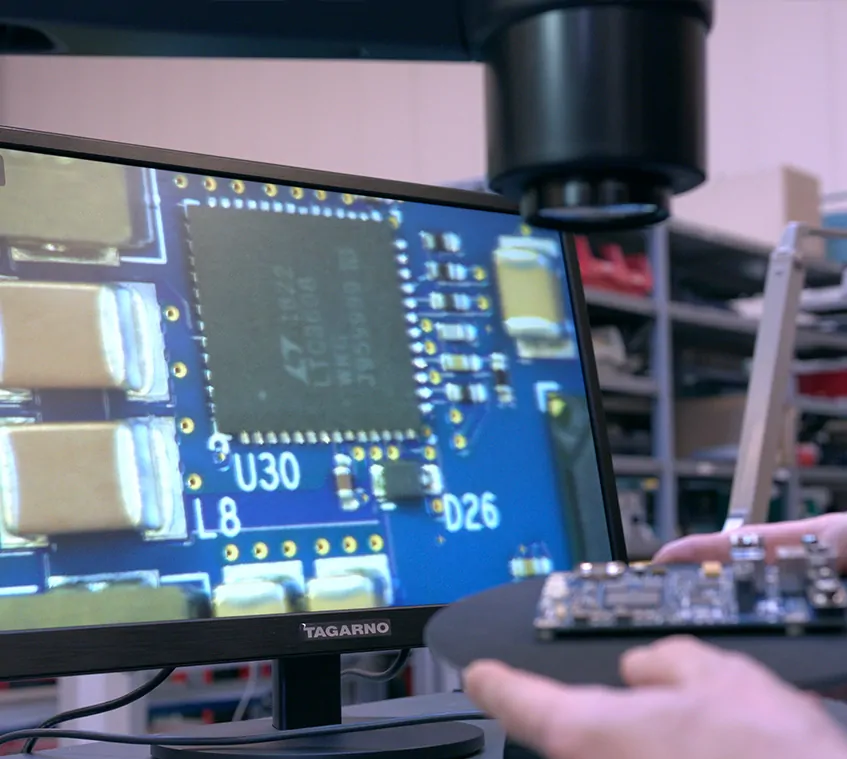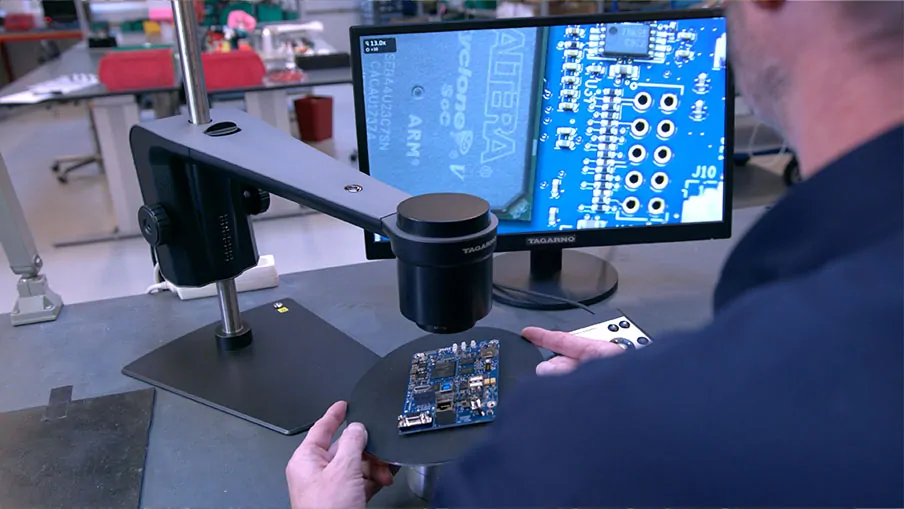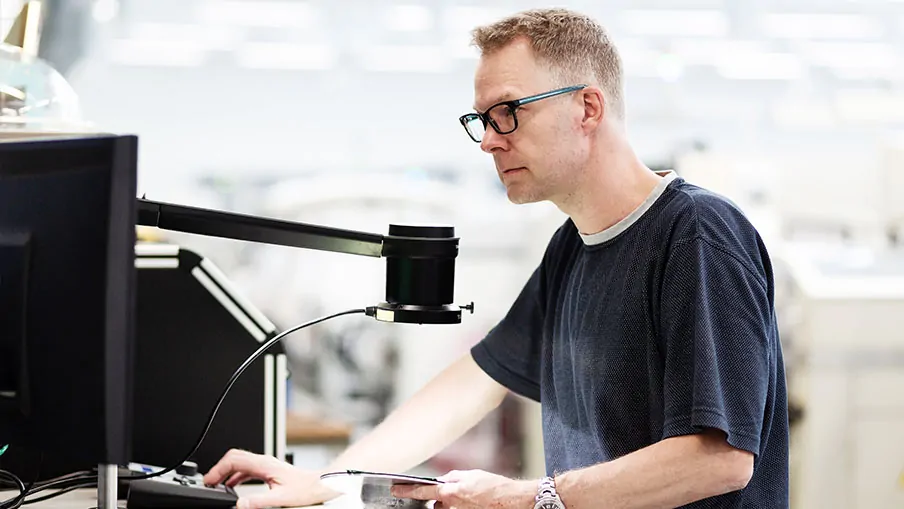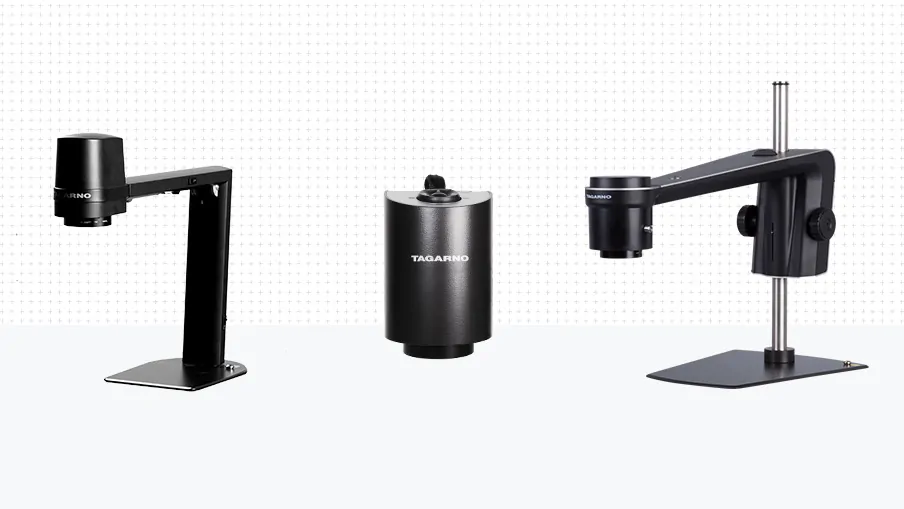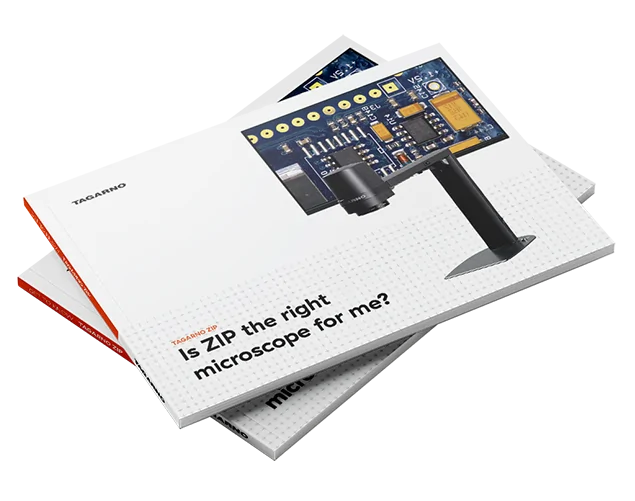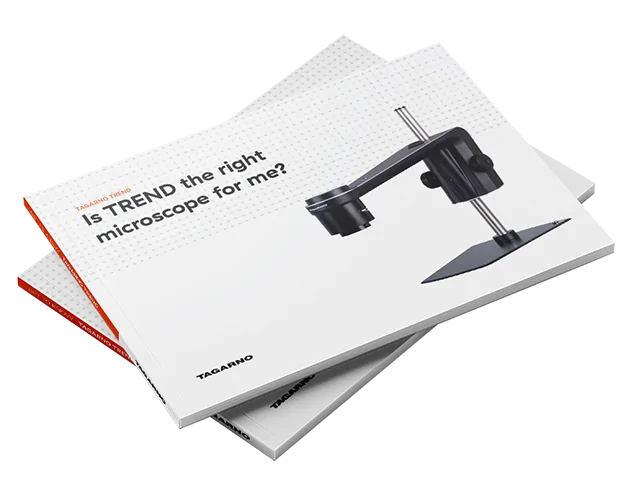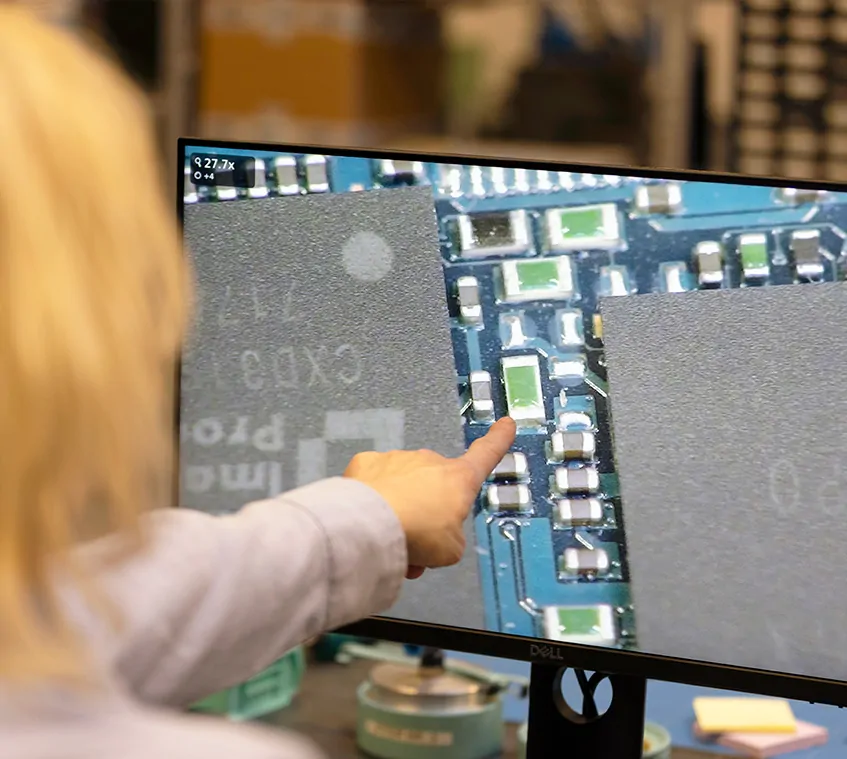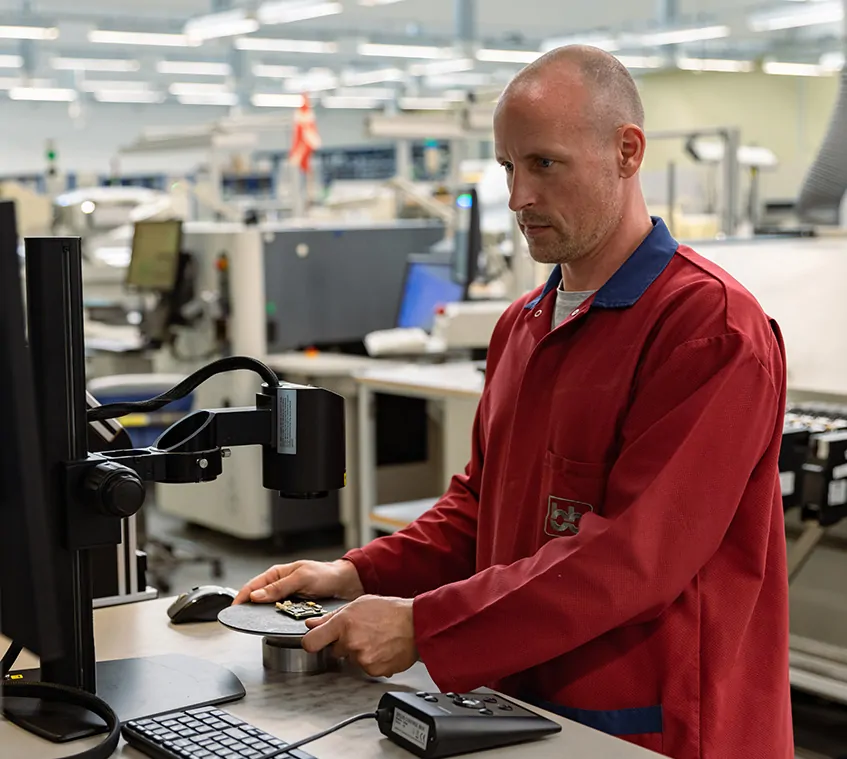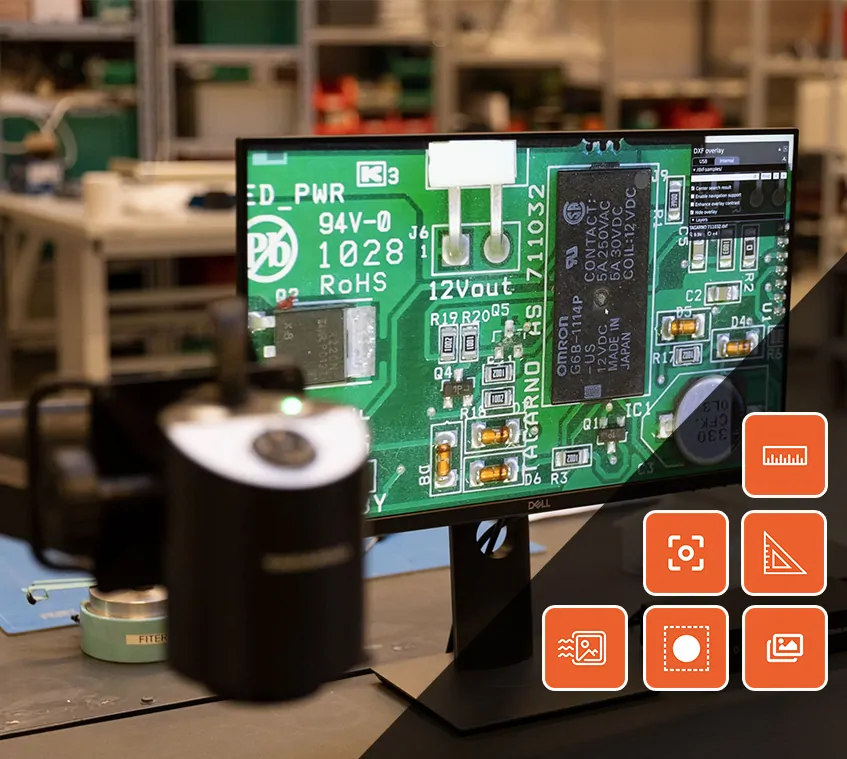TAGARNO ZIP
With 60 frames per second, 1080p image quality and auto focus, TAGARNO ZIP produces an extremely smooth live image that’s a prerequisite for doing electronics repair.
The microscope also offers 1.7x to 53x magnification which is perfect for electronics repair. The microscope also has built-in lighting and is compatible with various ring lights for additional lighting if needed.
With a footprint of only 38.6 cm by 15.5 cm (15.2’’ by 6.10’’) and weighing only 2.0 kg (4.4 lbs), the ZIP is also extremely lightweight and can be moved from station to station as needed. It can also be controlled with a footswitch, allowing you to use your hands to solder or move the PCB around as needed while adjusting the magnification level or focus area with your feet.
To capture photos of your work using the ZIP, connect it to a computer and use the built-in Windows OS Camera app. It really is that easy.
With ZIP, what you see is what you get. It’s a simple but user-friendly and high quality microscope that does everything you want from a digital microscope for electronics repair at a great price and with no unnecessary features.
